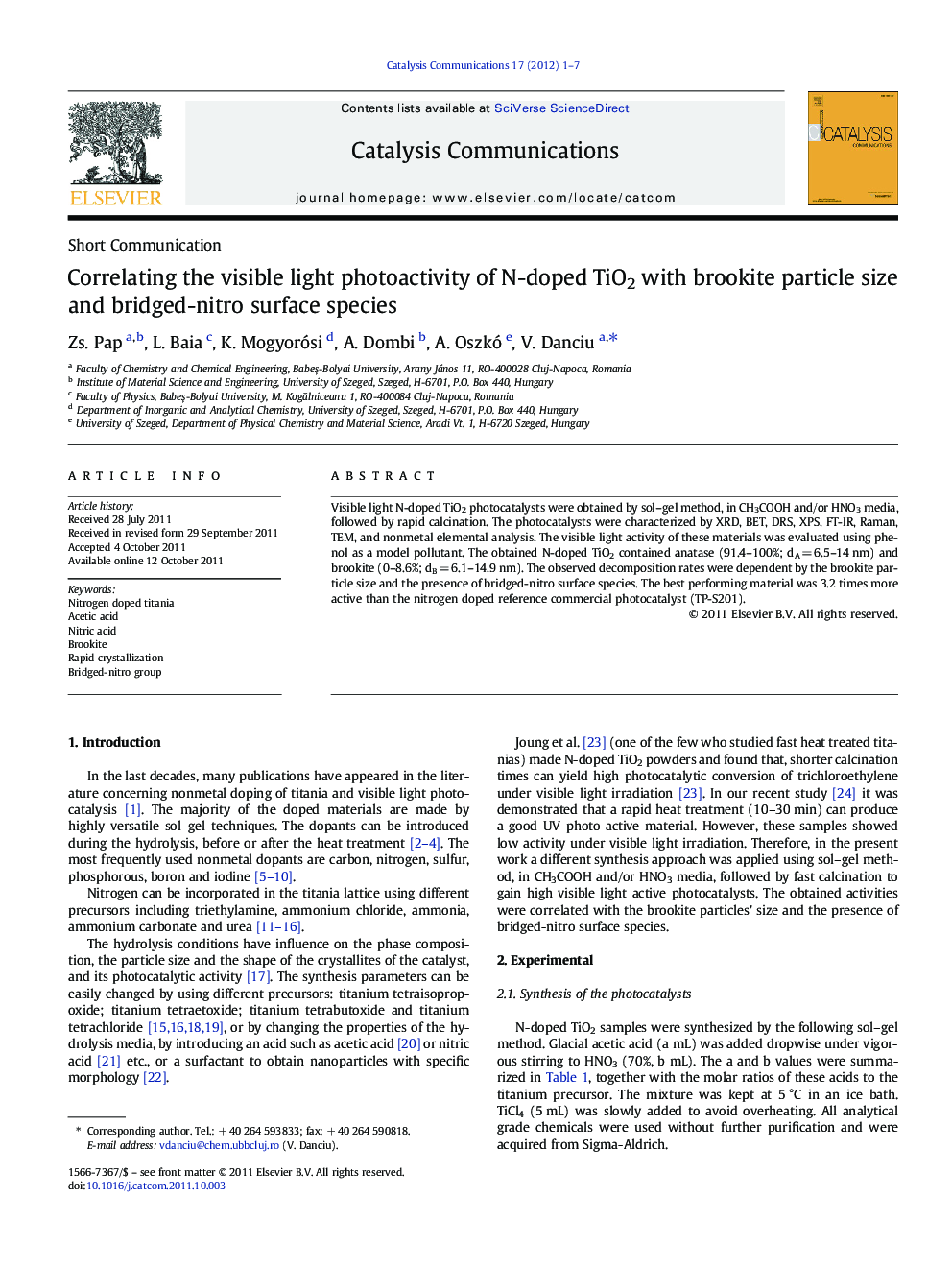| کد مقاله | کد نشریه | سال انتشار | مقاله انگلیسی | نسخه تمام متن |
|---|---|---|---|---|
| 50961 | 46824 | 2012 | 7 صفحه PDF | دانلود رایگان |

Visible light N-doped TiO2 photocatalysts were obtained by sol–gel method, in CH3COOH and/or HNO3 media, followed by rapid calcination. The photocatalysts were characterized by XRD, BET, DRS, XPS, FT-IR, Raman, TEM, and nonmetal elemental analysis. The visible light activity of these materials was evaluated using phenol as a model pollutant. The obtained N-doped TiO2 contained anatase (91.4–100%; dA = 6.5–14 nm) and brookite (0–8.6%; dB = 6.1–14.9 nm). The observed decomposition rates were dependent by the brookite particle size and the presence of bridged-nitro surface species. The best performing material was 3.2 times more active than the nitrogen doped reference commercial photocatalyst (TP-S201).
Figure optionsDownload as PowerPoint slideHighlights
► Efficient visible light active photocatalysts via sol–gel and rapid calcination.
► The particle size of brookite determines the photocatalytic performance.
► Bridged nitro groups are responsible for high VIS activity at short calcination times.
► Traditional calcination eliminates the bridged nitro groups.
Journal: Catalysis Communications - Volume 17, 5 January 2012, Pages 1–7